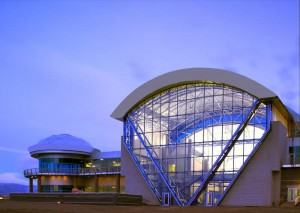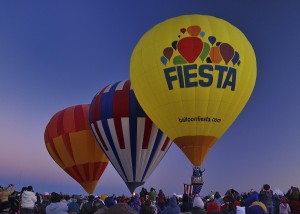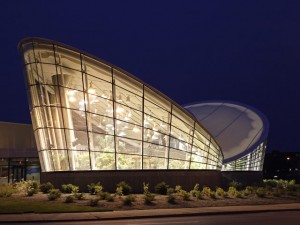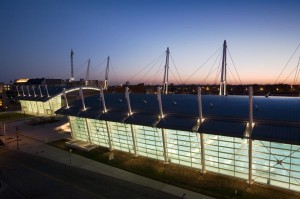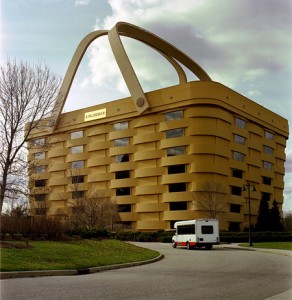Many structures whose external shape indicates the purpose of the interior achieve this effect by incorporating curved steel in their design.
For example, curved steel helped create the Anderson Abruzzo International Balloon Museum in Albuquerque, New Mexico.
The shape of the building mimics a hot air balloon’s shape.
Chicago Metal Rolled Products curved both 4in and 8in Schedule 40 pipe to a variety of radii from a 30in center-line radius to a 44in center-line radius to give shape to the building. Lengths varied from 12ft to 44ft.
The Strong Museum in Rochester, New York, recently completed a $33 million expansion that nearly doubled its size. This expansion includes an atrium that resembles a three-story caterpillar and a glass-enclosed butterfly conservatory that is shaped like a butterfly. The building is unique in the region.
Chicago Metal Rolled Products rolled 16″ pipe for the butterfly wings with a variety of radii ranging from 10ft 4in to 22ft 10in. The spine truss was made from 18″ pipe. The pipe was fabricated into the shape of wings and then covered with canvas, a specialty of Chicago Metal’s customer.
Another exterior design that more subtly indicates the activity within is found at the Ratner Athletic Center at the University of Chicago. In this building, designed by internationally famous architect Cesar Pelli, curved wide flange beams create a sinuous wave above the swimming pool below. Masts, cables and canted glass give the building what the designer described as “a dynamic athletic presence.”
Chicago Metal rolled 310 beams the “hard way,” i.e. against the strong axis, to form the wavy roof. 8 beams were rolled into an elongated “S” shape forming reverse curves for part of the roof structure.
To see dozens of buildings whose exterior suggests what’s happening on the interior, just Google buildings that look like. Many of them are wonderfully whimsical like the basket building.

